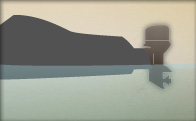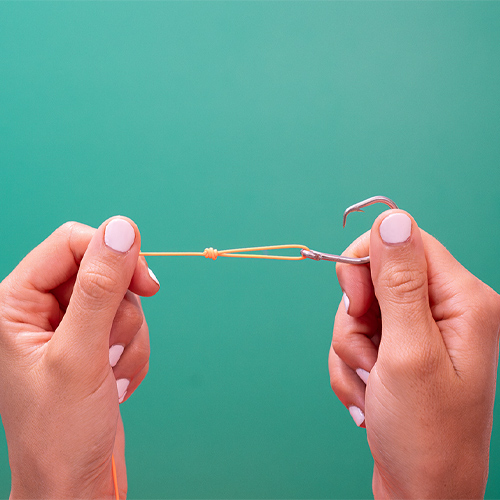Types of Boat Engines
Choosing the right type of boat engine for your vessel is very important. Both weight and horsepower will have an impact on the performance of your boat. Learn about different types of boat engines in this section.
Boat Engine Sizes
When choosing the appropriate boat engine for your vessel, consider the size and weight of the boat and remember that weight includes your passengers, fuel and gear. A good rule of thumb is to come as close as possible to the maximum horsepower that your boat is rated for.
Boat Engine Power
When looking at gasoline engines (outboard, stern drive or inboard), there are three distinct types of fuel delivery systems on the market. Each fuel delivery system is unique, and there are benefits to each system.
Direct Fuel Injection
- Low emissions
- Excellent fuel economy
- Instant turn-key starting
- Smooth idling
- Reduced vapor lock in warmer climates
- Automatically adjusts to altitude, air and water temperatures
- Superior throttle response and power
- Self-diagnosis systems available
- Sealed fuel system (helps to eliminate fuel oxidation)
Electronic Fuel Injection (EFI)
- Uniform air and fuel distribution
- Superior throttle response and power
- Usually excellent fuel economy
- Cold engine start
- Self-diagnosing systems availability
- Low emissions (especially four-stroke)
Carbureted Fuel Systems
- Lowest initial cost
- Simple design
- Higher emissions than an EFI or DFI system
- Poor fuel economy when compared to an EFI or DFI system
Types of Boat Engines
A boat engine is one of the most essential components of a vessel. For this reason, it is important to understand the different options available and which boat engine will fit your fishing needs. The two main factors to consider are the weight and horse power of your engine. These are the main types of engines available.
Diesel Inboard Engines
Diesel engines rely on compression to power the engine. Their design is similar to a traditional gas engine, with crankshafts and cylinders and pistons; however, the fuel systems on a diesel engine are completely different and more complex.
Diesel engines range in size and horsepower. While they’re widely used in other parts of the world, in the United States, they’re typically found in boats larger than 35 feet. The main reason diesel engines are not used in smaller boats is weight. In general, a diesel engine weighs more than a gas engine. However, they are used in larger vessels because of their ability to produce torque.
- No carbon monoxide to worry about in cabins or on the back of boats
- Excellent torque
- Long life expectancy
- Low running costs
- Generally run at lower RPM than traditional gas engines
- Non-explosive fuel
Gas Inboard Engines
These boat engines are modified for maritime use. Gasoline inboard engines range from 90 horsepower to over 1000 horsepower per engine and are used in a variety of boats, from tow sport boats to large cruisers.
In an inboard engine configuration, the engine sits amidships, with a drive running through the bottom of the boat to a propeller, and a separate rudder used for steering. A transmission is often used to transfer power from the engine to the propeller. Exhaust is passed through the stern of the boat. Inboards are common for tow sports such as waterskiing, wakeboarding as they allow the propeller to be brought forward of the back of the boat, providing area for platforms to assist skiers entering and exiting the boat.
- Simple drive system can lower maintenance
- No means to trim propeller
- Low running costs
- Quiet and out of the way
Outboards

An outboard is a portable, self-contained unit consisting of an engine, gear case and propeller, which is attached to the transom of a boat.
A growing number of outboard engines have a four-stroke design, but many are still conventional two-stroke engines that burn oil as a lubricant along with the fuel. New technology two-stroke outboards are direct-injection engines and burn more than 75% cleaner than conventional two-stroke outboards.
Steering of boats with outboards is controlled by a tiller or steering wheel that swivels the entire engine to direct propeller thrust. Outboards have more power per pound of weight than inboard engines.
Stern Drives

Stern drives are known also as inboard/outboards (I/Os) because they combine features found on both inboard and outboard engines. Stern drive engines are four-stroke automotive engines adapted for marine use and are mounted inside the boat.
A stern drive engine is attached through the transom to a drive unit (also called an outdrive) that is essentially the lower unit of an outboard. The engine turns a driveshaft that is attached to a propeller at the other end.
Steering of stern drive boats is controlled by the outdrive, which swivels like an outboard engine to direct propeller thrust. Stern drives have quieter and more fuel-efficient engines.
Jet Boat Engines

Jet propulsion systems have the advantage of having no propeller, which can be dangerous to people in the water and to marine life.
They are usually inboard engines that take in water that flows through a pump powered by an impeller. The water is then discharged at high pressure through a nozzle that propels the boat forward.The nozzle swivels to provide steering for the boat. Most personal watercraft use jet drives.
When power is not being applied, a jet-driven vessel loses its steering because it is the stream of water that steers the boat. Keep hands, feet and hair away from the pump intake and do not operate in shallow water.
Content courtesy of www.boat-ed.com and www.DiscoverBoating.com
Learn about different types of hulls in our next section.
KEEP LEARNING

TakeMeFishing x Teen Vogue
Join us on a creative journey as fashion designer Ahmrii Johnson walks us through her collaborative vision and process with Teen Vogue and fashion brand, Rentrayage, to create a special piece.
LEARN MORE

First Catch Center Trailer Gallery
FCC Trailer Photo Gallery
LEARN MORE

How to Tie a Duncan Knot
Learn to tie a Duncan knot by following these five simple steps. Watch our new video.
LEARN MORE


.png?lang=en-US&ext=.png)